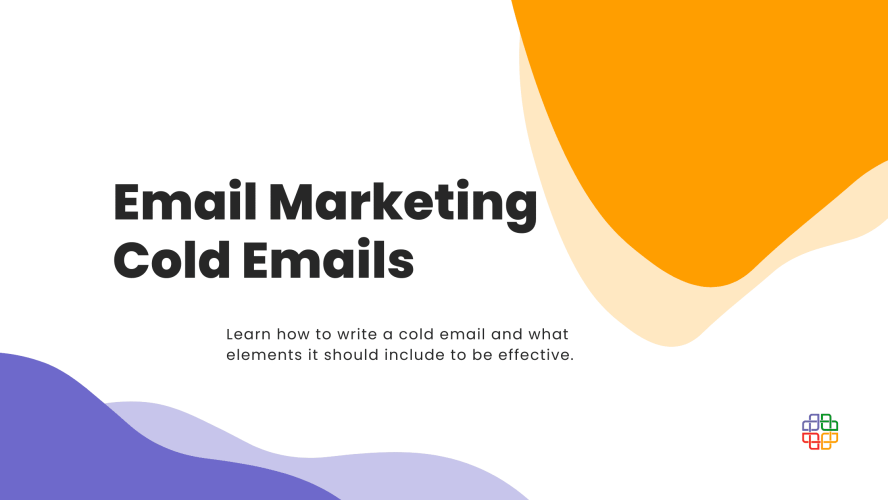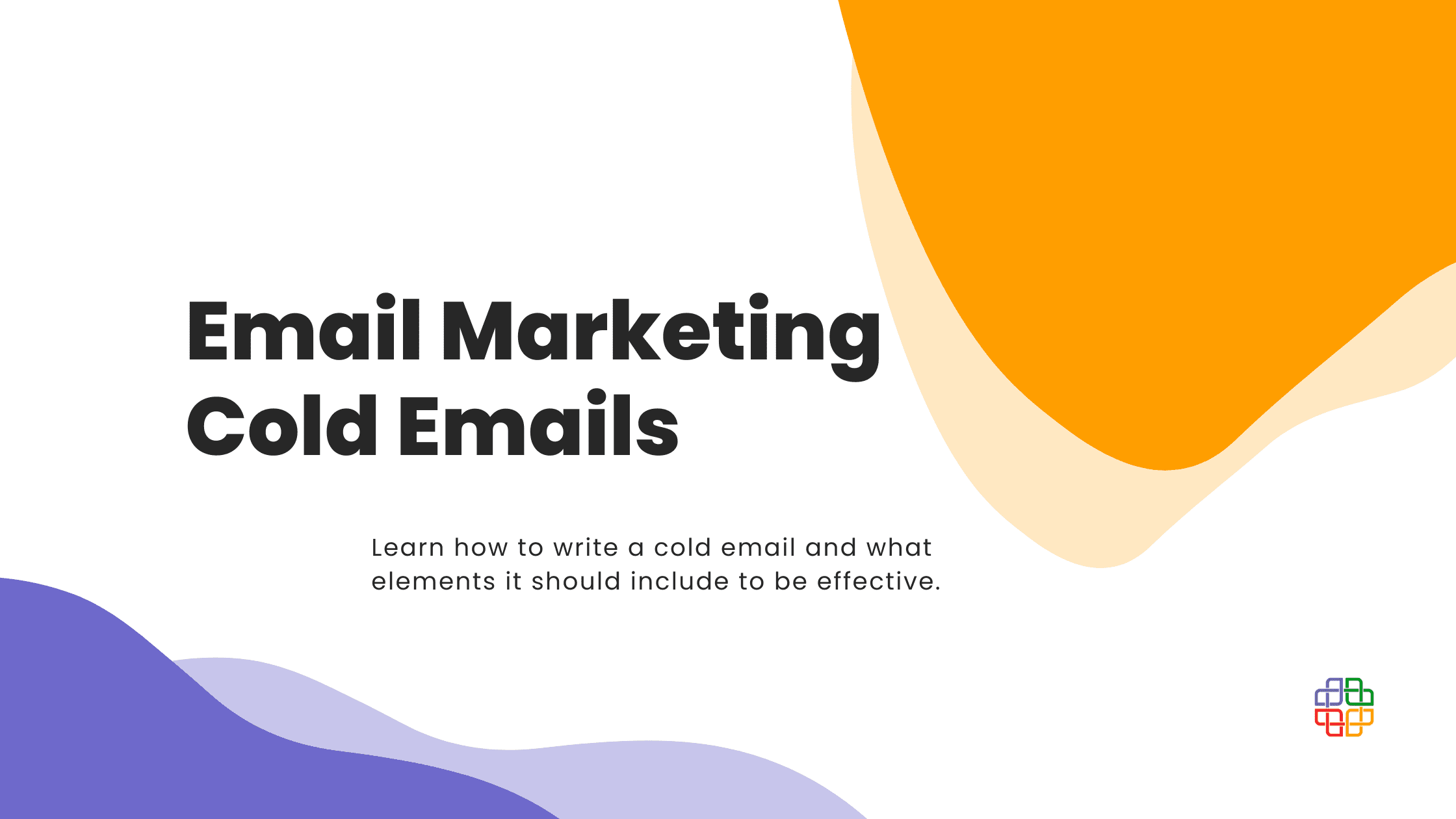They say that constant dropping wears away a stone. And that’s exactly what email marketing, particularly cold emails, looks like. You don’t come into your prospect’s mailbox like a wrecking ball, immediately and abruptly tearing down their indifference to your offer. Instead, you release tiny droplets of water every now and then, slowly but surely making your way through the consciousness of your prospect. It requires patience and many attempts to mold the stone with water. But it is possible. And it works.
Email marketing – what is it all about?
As you can probably guess, email marketing is a marketing technique focused on operating via email. Its purpose is to generate leads and build relationships with prospects and customers. We’ve already discussed in more detail the goals of email marketing as well as its effectiveness. However, knowing what email marketing can do is not enough to reach success. You need to also know how to do it. This article aims to help you with that.
Hot N Cold – two types of emails
Before you start crafting your emails, you need to first understand what type of email you are trying to create. It’s going to depend largely on the type of relationship that you have with your recipient.
Warm emails
Warm emails are the emails that you send to the people who already know you. And by that we mean any previous interaction they have made with your organization. It might be requesting a demo on your website, filling a contact form, buying your product, etc. Anything that indicates they know what your company is about and are, to some degree, interested in its offer.
This type of email is designed to build and nurture relationships with your customers and prospects, and to move them forward on their buyer journey.
Cold emails
Cold emails, as you can imagine, are quite the opposite of warm emails. They are sent to the people who have not made any previous contact with you, and might not know your company at all. These emails are unexpected and often even unwanted. That’s what makes them difficult to write. However, they serve the purpose of effectively gaining new leads and reaching out to potential customers.
Before you start writing, you must be sure which of these two categories your message should belong to. It will affect the content of your email, its tone and even its core purpose. A long-time subscriber will expect a different kind of message than someone who has never heard of your company before. Acknowledging various needs that your recipients have and figuring out how to fulfill these needs are the first steps to adapt a successful email marketer mindset.
The structure of your cold email
Some things require a plan in order to create them properly. When you’re building a house you need an architectural design. When you’re cooking a meal you’ve never cooked before, you need a recipe. When you’re writing a cold email you need an outline. Let’s quickly go through the essential elements that every marketing email should include, and explain their content.
- Subject Line
Your quest to grab your prospect’s attention starts here, in the mailbox, from the very first words that you write. Your whole email will be pointless, if the recipient does not even click it. That’s why it’s so important to carefully choose your subject line. It needs to be unique, intriguing and promise a solution to some kind of a problem that your recipient can possibly struggle with. The number of characters is very limited – optimally around 60. If you write a longer subject line, it won’t fully display in your recipient’s mailbox, especially if they’re using a mobile device. To avoid such issues, focus on short subject lines. Make them friendly, but not salesy. And don’t put all of your cards on the table yet! It’s just a sneak peak!
- Salutation
If you’ve managed to intrigue your recipient enough to make them click the email, now is the time to properly greet them. Imagine that you receive an email from your friend. How does it start? If it was an email sent to me, it would probably be “Dear Anna” or something along those lines. But what if, instead, I would’ve received an email starting with “Dear Sir/Madam”? I would probably not even read the rest of it, as it’s clearly not addressed personally to me. Would you?
Using a personalized salutation sets the friendly, casual tone for the whole email. It grabs people’s attention and makes them think a little longer before they click the “Delete” button. For some it will be long enough to start reading the next line of your message. And these are exactly the people that you want to get to.
- Problem
In your first paragraph you want to focus on one potential problem of your recipient. It’s important to choose only one problem and provide one solution at a time. It’s not a white paper, nor is it a blog post. Your aim is to write a relatively short message that will still bring value to its reader, but won’t exhaust them.
In order for your recipient to keep on reading, you must effectively show your relevance and you must do it in this first paragraph of your email. Showing your relevance can be achieved by naming a potential struggle that your recipient can have. It must be, of course, a problem that you can offer a solution to. Otherwise, there would be no point in bringing that up.
Make a research about your recipient and the industry that they are operating in. Find out what common problems they encounter. Select the ones that your company can solve. And write about it! If your recipient happens to struggle with the issue that you’ve described, there is a high chance that they’ll keep on reading.
- Solution
The next step is to offer a solution to the problem that you’ve just mentioned. Describe your product or service, share a relevant blog post or attach a brochure. Give your recipient something to interact with, but also provide some useful information within the content of your email. If you don’t explain to them why they should click the link, they won’t do it. If you don’t prove that you know what you’re talking about and that getting to know your company a little bit better is worth the effort, you might just miss a chance and waste your time. To avoid such a scenario, invest in your recipient, give them something of value.
- Call To Action
Almost all of the pieces of your email puzzle are in their place. There is only one last thing that you need to include – a call to action. You’ve recognized your recipient’s problem, offered a solution, now you need to tell them what their next step should be. Without this part the email won’t be complete.
Ask your recipient to “Click on the link to find out more” or “Contact us today”, etc. depending on what the content of your email was and what outcome you expect out of this marketing campaign. If you expect your reader to contact you, you should provide them with at least two different contact options, e.g. phone number and email address. Many people prefer one of these options over the other, and won’t bother reaching out to you, if you don’t provide them with a comfortable way of doing it.
Email sequences
As we have mentioned in the introduction, email marketing is not a one-time task. It’s a long-term investment that requires not only patience, but also a detailed plan. You need to prepare a collection of different problems along with their solutions, materials, resources and a schedule of sending your emails.
What you also need is to be flexible. React to your recipient’s responses (or the lack of them) and move them in your email sequence accordingly. There are many email marketing tools that can help you with that (e.g. Sender).
We will furtherly explore this and other topics related to email marketing in our future blog posts. Stay tuned!




